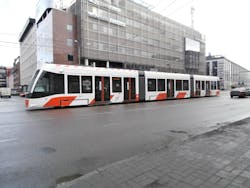Paying for Transit
As this issue is going to press the 6th annual National Infrastructure Week was coming to end. And it was happening just as oil prices were topping $80 and the Administration’s infrastructure plan appears to be put on hold as the White House press secretary stated it doesn’t appear any specific piece of legislation will happen by the end of the year.
While I was going to write on infrastructure backlog, increased congestion, decreased funding, other news leading the headlines are about European cities looking at the potential of offering free public transportation.
European cities, including Paris, France, and several cities in Germany, are looking to test free transit.
For European countries, racing to meet the European Union air pollution targets to avoid large fines is one driving factor.
Nine EU members have not met the deadline to meet EU limits on nitrogen dioxide and fine particles and they were given extra time to meet limits or face legal action.
Another driving factor is that more than 130 European cities are affected by life-threatening air pollution, according to the European Commission, costing $24.7 billion (€20 billion) in health spending each year.
In 2013, the city of Tallinn in Estonia began offering free public transportation to all residents. Now, the government of Estonia is looking to make transit free to residents throughout the country starting July 1.
Head of Tallinn European Union Office Allan Alaküla has said they have earned double what they lost since offering free transportation.
Residents have to be registered as such, and then the municipality receives $1,180 from your income tax each year to cover costs. Visitors still pay to use transit.
Since implementation, Tallinn has seen a 10 percent decrease in traffic in its city center and a slight increase around the center.
One other point worth noting, much of the increase in ridership in the city center isn’t due to people necessarily getting people out of single-occupancy vehicles, but rather people hopping on the tram to shorten a walk.
While getting people to leave their car at home will take a more convenient, quicker and more economical option, making a longer or more challenging option free, won’t change patterns. However, new ways of generating revenue that come out of these schemes may provide lessons to learn from.
No details have emerged as to how Germany might fund its free transport. Paris would need an additional $7 million (€6 million) per year and suggestions of increased congestion pricing, a new tax and an overhaul of subsidies by businesses to their employees but nothing has yet been determined.
One thing is for certain, when a city the size of Paris takes this step, it shows that drastic changes need to be put in place to address the global issues of pollution and congestion.
